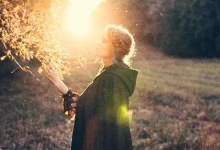Leo: The Backwards Question Mark in the Spring Night Sky

As spring unfolds and the earth reawakens, the night sky reveals one of its most magnificent constellations: Leo, the Lion. Among the glittering tapestry of stars, Leo stands out with its distinctive pattern—a backwards question mark that captures the imagination of stargazers and astrology enthusiasts alike.
The Lion in the Stars
Leo is not just one of the zodiac constellations beloved by many; it is also a celestial marvel with rich historical and astronomical significance. Its most recognizable feature is the “Sickle” or backwards question mark shape, formed by six bright stars including Regulus, Denebola, and others. This pattern represents the head, neck, and majestic mane of the lion, making it a striking sight in the spring sky.
How to Spot Leo
Finding Leo is relatively easy during spring evenings. Look toward the southeast after sunset, where Leo rises between Virgo and Cancer. To its north lie Ursa Major and Leo Minor, while Hydra, Sextans, and Crater stretch to the south. Covering 946.96 square degrees of the sky, Leo ranks as the 12th largest constellation. By midnight on March 1st each year, Leo’s center shines directly overhead, offering prime viewing opportunities.
Key Stars and Celestial Highlights
Regulus, the brightest star in Leo, is a blue-white giant with an apparent magnitude of 1.35, ranking as the 21st brightest star in the night sky. Symbolizing the lion’s heart, Regulus lies near the ecliptic and is occasionally occulted by the Moon. Along with Aldebaran in Taurus, Antares in Scorpius, and Fomalhaut in Piscis Austrinus, Regulus is one of the four “Royal Stars” of the zodiac, each separated by about 90 degrees on the celestial sphere. These stars were historically used by navigators, earning Regulus the title of one of the “Navigation Stars.”
Another notable star, Denebola (Beta Leonis), is a white variable star with a magnitude of 2.1. Together with Arcturus in Boötes and Spica in Virgo, it forms the Spring Triangle—a prominent asterism—and with the addition of Cor Caroli in Canes Venatici, it completes the Spring Diamond.
Mythology and History
Leo’s history spans millennia. Ancient Egyptians associated the constellation with the lions that gathered along the Nile River during the summer months, lending the constellation its name. The Great Sphinx is believed to be inspired by Leo’s body paired with the head of Virgo. In Chinese astronomy, the stars of Leo were linked to the Yellow Emperor and revered as Xuanyuan.
The Legendary Leonid Meteor Shower
No discussion of Leo is complete without mentioning the Leonid meteor shower, often called the “King of Meteor Showers.” While the meteors appear to radiate from Leo, they originate from debris left by Comet Tempel-Tuttle. The Leonids are active annually from November 14 to 21, typically producing 10–15 meteors per hour. However, every 33–34 years, this shower reaches a spectacular peak, with thousands of meteors streaking across the sky per hour, creating a breathtaking display tied to the comet’s orbital period.
Embrace the Spring Sky
Spring offers the perfect opportunity to witness Leo in all its glory. Whether you’re an avid stargazer or simply curious about the cosmos, grab your binoculars or telescope, gather some friends, and venture out to trace the celestial lion. Its brilliance and lore are sure to leave you inspired.







